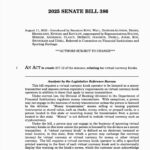Ether’s Recent Price Movements
Ether’s (ETH) price has been establishing a series of lower highs and lower lows on the daily candle chart since it peaked at an all-time high of $4,950 on August 14.
As the price declines, the $4,500 mark has transformed into resistance, a threshold that has constrained the altcoin for over 10 days. Let’s examine what is preventing Bitcoin from moving past the $4,500 level.
Resistance at $4,500
Ether’s capacity to rise above the resistance at $4,500 seems restricted due to a lack of buyers.
Its spot volume delta metric—an indicator that assesses the net difference between buying and selling trade volumes—indicates negative net spot buying on exchanges, even while ETH price remains consolidated.
This implies that price recovery might lack the necessary momentum, possibly resulting in ongoing consolidation or a more significant pullback.
Without genuine demand, any breakout effort could lack the strength needed to elevate ETH above crucial levels. Therefore, it is essential for buyers to enter the market to sustain the long-term uptrend.
Declining Demand for Spot Ethereum ETFs
Demand for spot Ethereum ETFs has been waning, with these investment products experiencing outflows every day last week, as per data from SoSoValue.
Just on Friday, Ether ETFs saw outflows of $446.8 million, which brought the total outflows for the prior week to -$787.6 million. Consequently, ETH must attract new buyers to break free from the current range and reach $5,000.
Decrease in Leverage and Open Interest
The reduction in demand for leverage has led to a significant decline in Ether futures open interest (OI), which dropped by 18% to $58 billion at the time of writing, down from an all-time high of $70 billion on August 23.
Open interest reflects the total number of ETH futures contracts available across derivatives exchanges, including CME, Binance, Bybit, and OKX.
Although futures longs (buyers) and shorts (sellers) are continuously matched, a falling OI suggests diminished leverage and market participation, which may indicate weaker bullish sentiment.
Notably, an 18% decrease in OI between July 28 and August 3 coincided with a 15% decline in ETH price.
Ethereum Revenue Drop
As reported, Ethereum revenue, which is the share of network fees that goes to Ether holders due to token burns, plummeted by about 44% in August, even as the price surged to all-time highs.
August’s revenue totaled over $14.1 million, down from July’s $25.6 million, according to Token Terminal. This decline occurred despite ETH rallying by 240% since April, with the price reaching an all-time high of $4,957 on August 24.
This decrease coincides with an approximate 10% reduction in network fees over the past 30 days, down to about $43.3 million, as per data from Nansen.
A significant factor in Ethereum’s revenue decline stems from the Dencun upgrade in March 2024, which lowered transaction fees for layer-2 scaling networks utilizing it as a base layer for transactions.
Chart Patterns and Predictions
Since mid-August, the ETH price has been establishing a descending triangle pattern on its daily chart, defined by a flat support level and a downward-sloping resistance line.
A descending triangle pattern that appears after a strong uptrend typically signals a bearish reversal. As a general guideline, this pattern resolves when the price drops below the flat support level, potentially falling by as much as the triangle’s maximum height.
A daily candlestick close below the triangle’s support line at $4,200 would confirm a continued downtrend toward the measured target of the pattern at $3,550, representing an 18% decline from current price levels.
However, several analysts suggest that a bounce could occur sooner. Investor and trader Ted Pillows noted that the ETH price is “looking strong” above $4,200, adding that a deeper drop to retest the $3,800-$3,900 range could happen before a reversal.
$ETH is holding above its $4.2K support level. Ethereum price action isn’t looking robust, as every slight bounce is being fully retraced.
Potential Rebound Area
As noted, another area to monitor for a potential rebound is $3,745 if the support at $4,250 is compromised.
This article does not provide investment advice or recommendations. Every investment and trading move involves risk, and readers are encouraged to conduct their own research before making decisions!



















